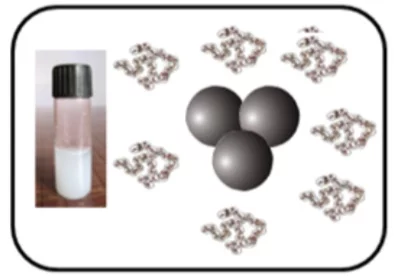The phase behavior of nanoparticle (silica)−polymer (polyethylene glycol) system without and with an electrolyte (NaCl) has been studied. It is observed that nanoparticle−polymer system behaves very differently in the presence of electrolyte. In the absence of electrolyte, the nanoparticle−polymer system remains in one-phase even at very high polymer concentrations. On the other hand, a re-entrant phase behavior is found in the presence of electrolyte, where one-phase (individual) system undergoes two-phase (nanoparticle aggregation) and then back to one-phase with increasing polymer concentration. The regime of two-phase system has been tuned by varying the electrolyte concentration. The polymer concentration range over which the two-phase system exists is significantly enhanced with the increase in the electrolyte concentration. These systems have been characterized by small-angle neutron scattering (SANS) experiments of contrast-marching the polymer to the solvent.
- About the CenterfermerAbout the Center
- Our Research
- Facilities
- SINQ: Swiss Spallation Neutron Source
- SμS: Swiss Muon Source
- CHRISP: Swiss Research Infrastructure for Particle Physics
- Scientific Advisory Committees
- Publications
- Jobs & Education


